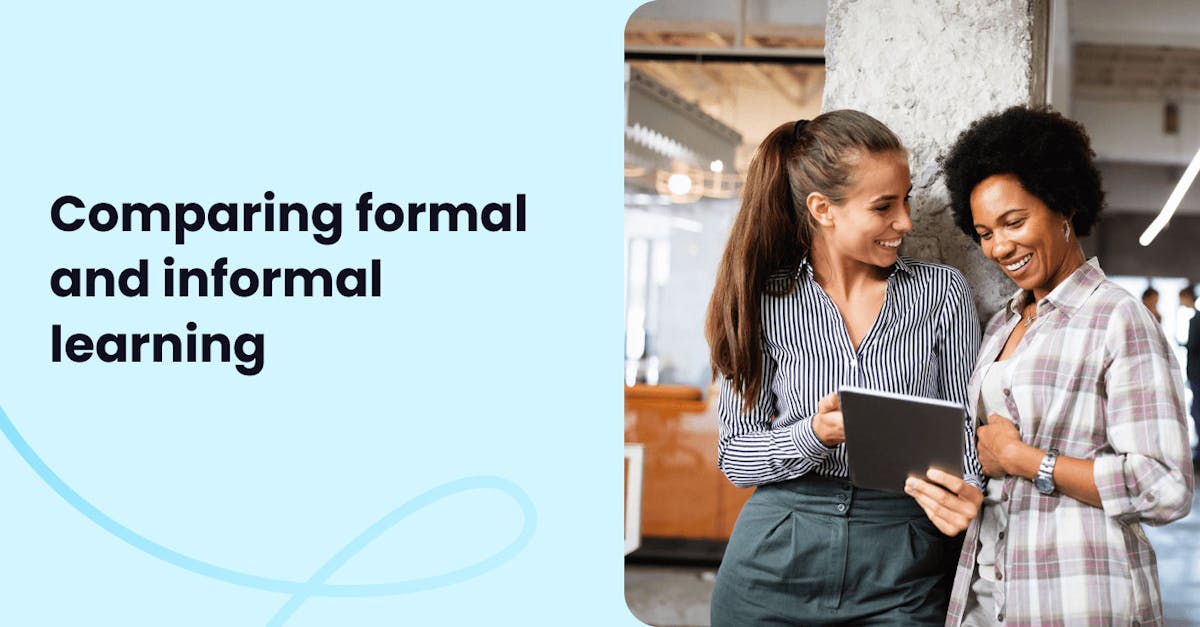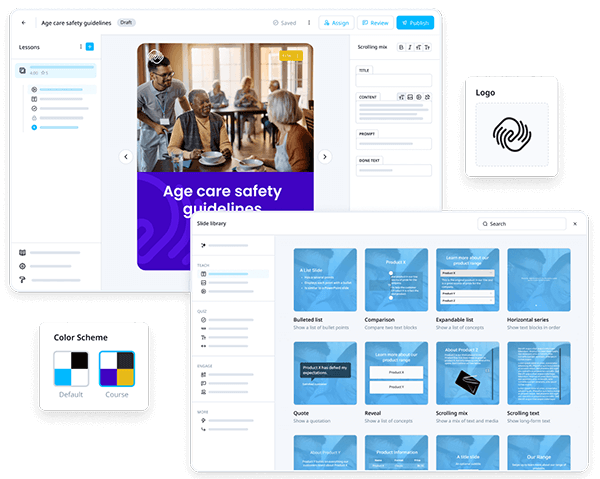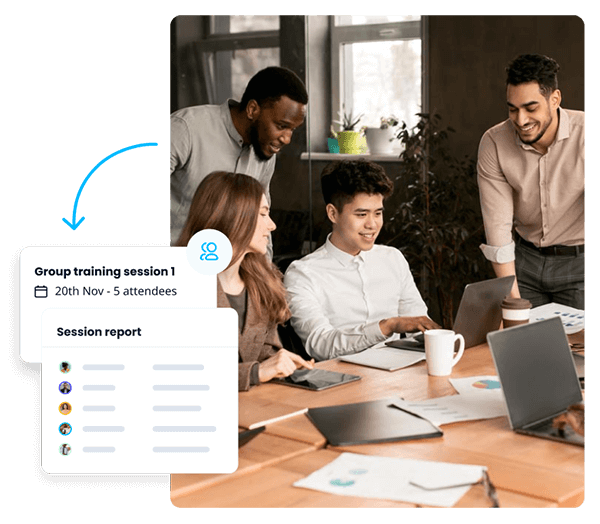Comparing formal and informal learning: Which is right for your team?

Have you come across the terms ‘formal learning’, ‘non-formal learning, and ‘information learning’? Are you a little unsure about where one begins and ends? This article will guide you through the terms, give you examples, and then talk about how you can blend these three learning types into the optimum training approach.
Here are their definitions according to the Council of Europe.
Formal Learning
According to the Council of Europe, formal learning is guided by a syllabus or learning plan. In the case of training, for example, the syllabus/plan was created by the training department. So the primary ‘motivator’ for the learning is the company, not the learner or trainee. Since the goal of each and every activity is learning, formal learning is said to be intentional. Tests or practicals are used to assess learning success.

Formal learning examples
- Training lectures and workshops
- Required e-Learning courses
Non-formal Learning
One of the main differences with non-formal learning is that the primary ‘motivator’ is the learner or trainee. While non-formal learning is still intentional, it may or may not follow a set syllabus or learning plan. The learning is still done in some type of organizational setting.
Non-formal learning examples
- Taking courses for career advancement
- Community center classes
Informal Learning
The Council of Europe describes informal learning as ‘involuntary’ learning. In other words, there is no primary ‘motivator’—the learning just happens as part of daily life. In informal learning, there are no assessments to see if we have ‘got it’, and it can happen in any setting.

Informal learning examples
You are photocopying your office documents and the machine jams. Your colleague comes to help. Watching them, you learn how to unjam the machine for the future.
You and a catering colleague are setting the tables for a wedding. You notice some small things which your colleague does to make the tables look extra special. Now, they are part of your ‘tricks of the trade’.
Factors to consider when implementing formal and informal learning
Using an LMS or other elearning tools
Most companies train their team through formal and informal learning methods. This is primarily done through online courses that are deployed using learning management systems (LMS). Each course typically contains several modules and each module has various numbers of microlessons and includes components of gamification and social and peer learning.

Primary motivators
Sometimes the primary motivator is your enterprise. You have decided that the employee needs to complete the training. This would check the formal learning box. However, what about a worker who wants to make a vertical or lateral career move and needs the training to do this? In that case, we would need to check the non-formal learning box.
Training content (syllabus/plan)
Chances are, your training department has set the training goals. They have done this as a result of meetings with management to understand the company’s reskilling and upskilling needs. Then, in collaboration with organization experts, they have curated the needed material and created the courses. This would make the training content 100% formal learning.

Training components
Here’s where it gets interesting. Some of the LMS templates are straightforward games. In addition, most of the ‘serious content’ authoring templates of an LMS such as EdApp incorporate ‘fun’ formats such as swiping, clicking, and dialing. Gamification is considered informal learning. Two more EdApp options are Assignments and Discussions which are examples of social and peer learning. Both of these are also considered to be informal learning.

Assessments
One assessment method is quizzes. On the surface, this seems like straight formal learning. Yet, what if the quiz was created with a game template or an authoring template with gamification elements? A little less clear, right?

Another option is practical assessments. You build the assessment form in your LMS and enter the data on the basis of the trainee’s practical performance. Again, this seems totally formal learning. And yet, what if the entire process is motivated by the trainee’s desire to ‘get ahead’ at work? Now, it would check the non-formal learning box.
So, which is right for your team?
For what it’s worth, here’s what I think: My field experience with learners of all ages including adults shows that a blended approach is usually the most effective methodology.
Here’s a current, concrete, personal example. At the moment, I am teaching a 14-week pre-academic English course. Students who want to get accepted to the college I work for need to take this course and get a grade of at least 80. We meet twice a week, F2F, for a total of 8 academic hours per week.
We are a team of teachers. The number of teachers depends on the number of students who register. This time, we are six teachers, teaching groups of roughly 30 students each.
The course has a common syllabus that sets the goals and grading. There are common resources: a file of academic texts, practice exams, and online language exercises which are automatically graded. However, each teacher is free to follow their personal pedagogy and teaching style.
Each 14-week course, I begin by reviewing my current material for roughly the first 8 lessons (4 weeks). This gives me time to get to know the levels and characteristics of my young adult learners. How heterogeneous is the class? What kind of concentration levels do they have? Which activity types resonate best with them?
As I move forward, I keep tweaking my lessons to answer this group’s needs. I also ask for their feedback. What things which we have not yet covered do you think will help you cope better with your academic English? Which activity types do you feel help you learn more effectively?
From their feedback, I learned that this group loves games! The more games the better—and if there are several games in one lesson, fine with them. I am a fan of learning gamification, so I use low-tech language board games. (Yes, dice and soldiers.) I also use EdApp, Quizlet, and Kahoot. While all these games are technically informal learning, they help me teach my learners the material I have decided on (which makes the content formal learning). Don’t forget though that I only knew this because I asked for student feedback. This makes them the primary motivators and qualifies as non-formal learning.
The conclusion? Feel confident to explore different options until you find the blend which works best for each type of training at your enterprise.
Using a blended learning approach in your training is easy with EdApp. Sign up for free today!
Author
Guest Author Lisa Aharon
Lisa Aharon is a guest author at EdApp, offering varied experience as a computer programmer/analyst, technical writer, secretary/bookkeeper, copy editor, creative writer, and English teacher.
